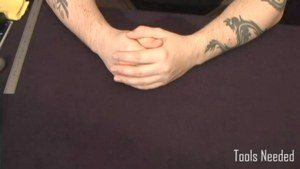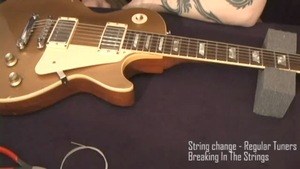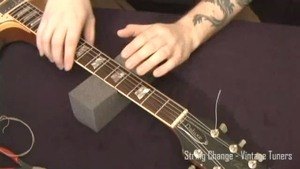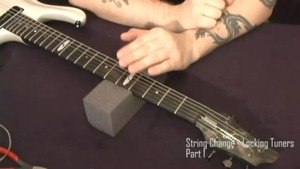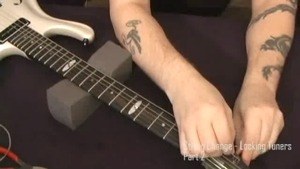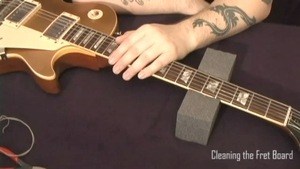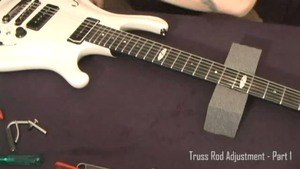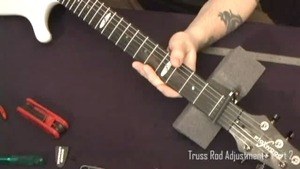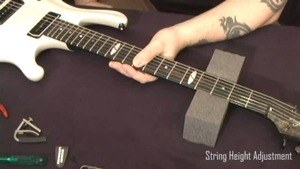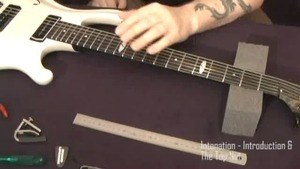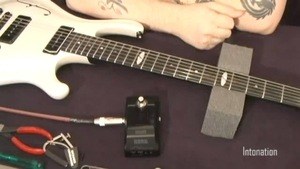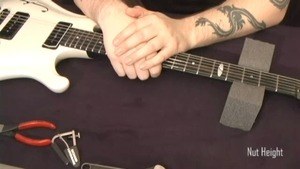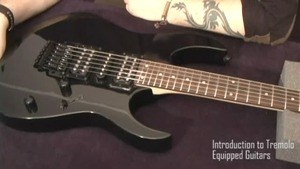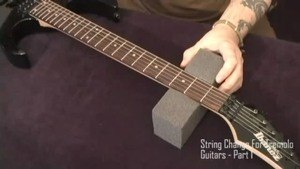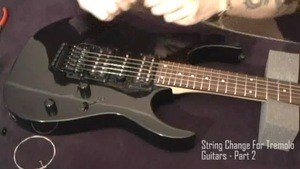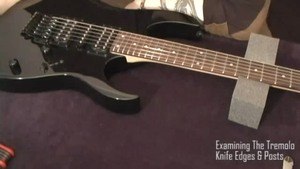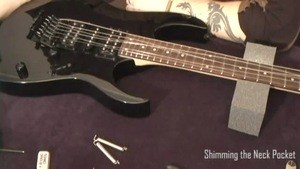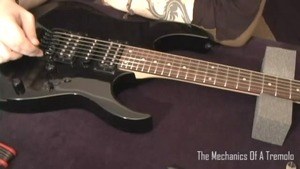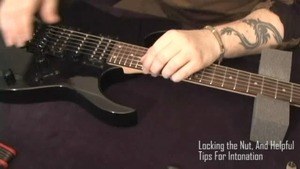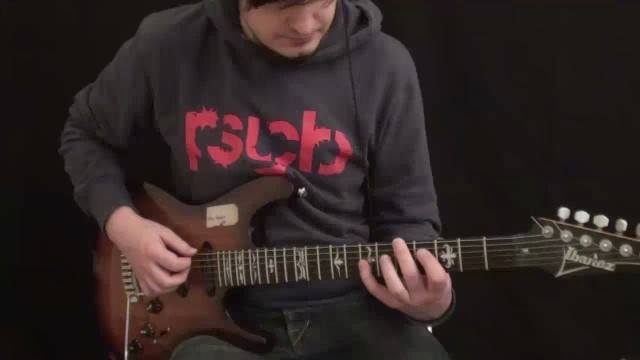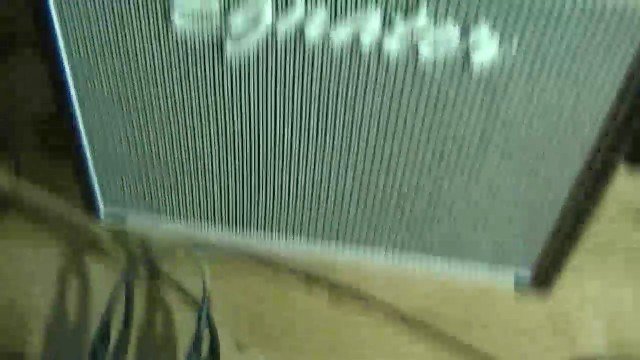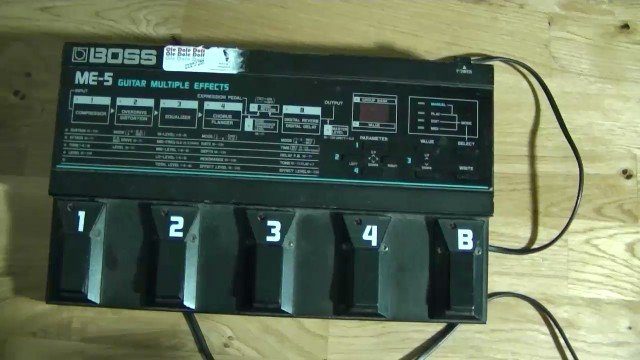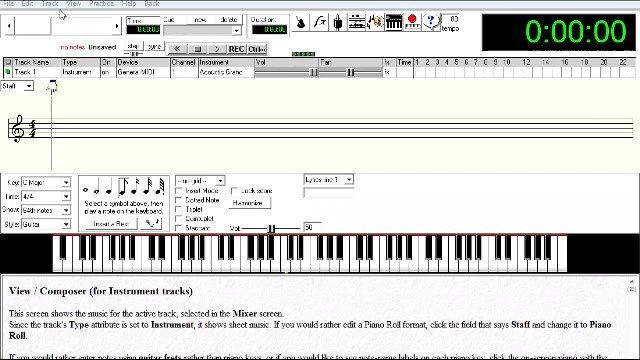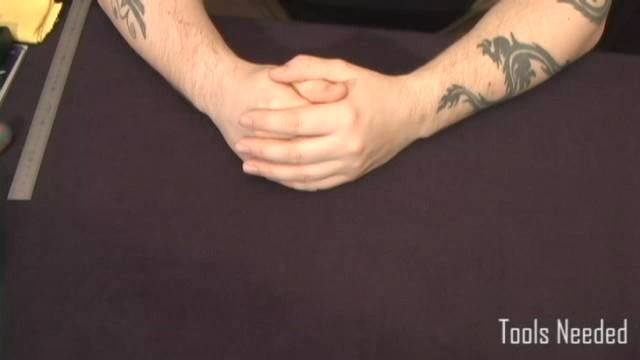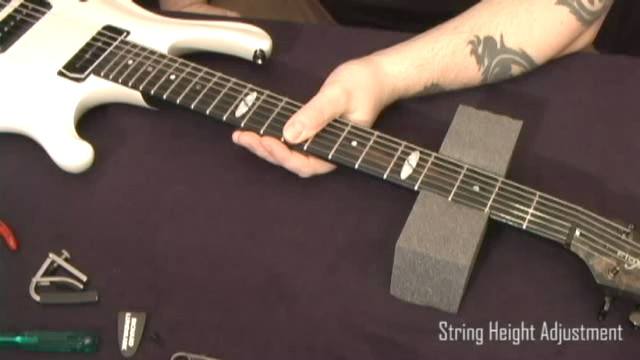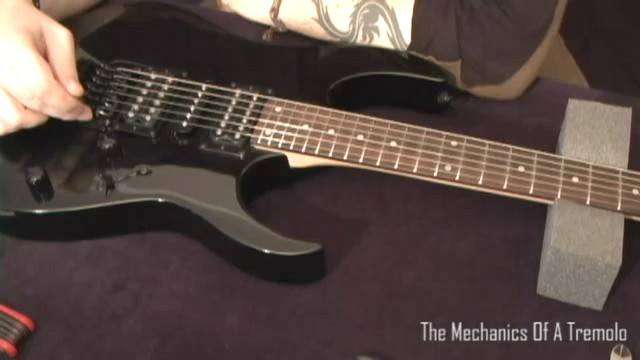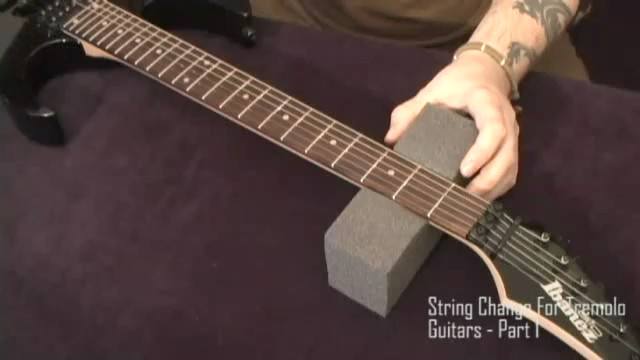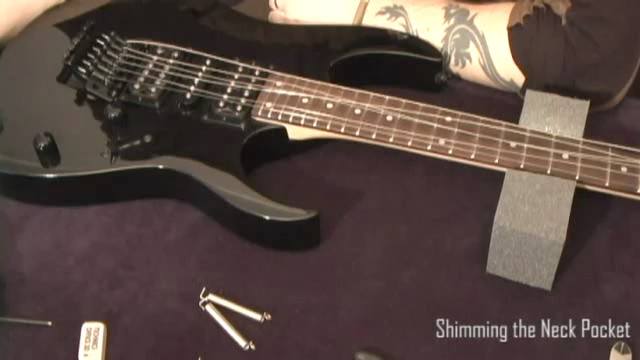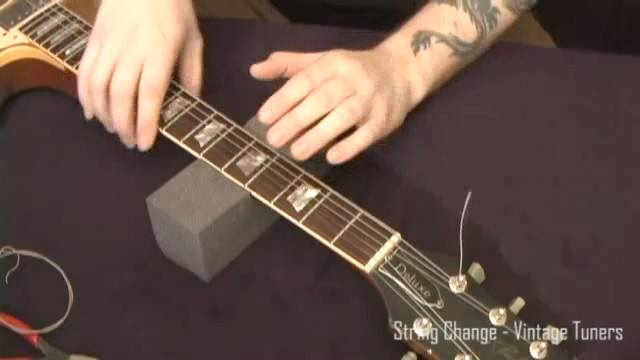Truss Rod Adjustment - cont:
First of all we need to determine what our current relief is, and decide how or if we want to change that. The way to do this is either by using you eye-sight, or by measuring with a steel ruler or with so called “feeler gauges”, which are thing metal blades of different thicknesses (gauges) that you can put between the frets and the string, to determine distance. In this tutorial, we will use a steel ruler, and follow these steps:
1. Take a capo, and put the on the first fret of the guitar.
2. Lace your guitar in playing position, and take a finger on your right hand and press that down on the highest fret of your guitar (be that the 21,22 or 24th fret).
3. Take your ruler and measure the distance between the frets and the string at the highest point (usually between the 7-9th fret).
4. This distance should generally be between 0.3-0.5 mm for a very playable, flat relief (most Ibanez guitars comes with this relief.
Ok, once we have measured and noted our actual relief, it’s time to adjust the truss-rod.
If you find that your relief is to flat (below 0.3mm), you need to loosen the truss-rod, to allow the neck to bend more. You do this by loosening the truss-rod by turning the wrench counter clockwise.
If you find that your relief is to high (above 0.5mm), you need to tighten the truss-rod, to force the neck to straighten. You do this by tightening the truss-rod by turning the wrench clock wise.
WITH THIS SAID however, these are general guidelines. If you can have a flatter relief on your neck, without fret buzzing, or notes fretting out when you bend, AND you like it that way, then a lower action is fine. Remember, as I briefly touched upon earlier, the guitar will actually intonate better that way. But, this generally requires you to use thinner gauge string (0.08-0.10). If you are like me, and like heavier strings (0.11 regular tuning), you will have a hard time getting enough force for bending with such a low relief, because you will not be able to grip the string effectively when bending. In such cases a higher relief is preferred. My relief is around 0.5mm. This is optimum for my playing style, and my heavier strings. However, more on that in the intonation chapter.
Sometimes you might want to have a lower relief, but find that it causes excess fret buzzing. This can be caused by the frets being uneven in height, ever so slightly. This can be solved by a good fret re-dressing, where PLEK:ing the neck is a good option. It’s a machine/laser guided process that polishes your frets to perfect height, and allows you to have really low action and relief without any buzzing.
Another thing that affects the chosen relief is the neck radius, which is how curved the frets are. A modern rock guitar, like an Ibanez or a Jackson, often have at least a 12” and sometimes up to a 16” radius. This means, the neck is very flat (the frets are flat, we’re not talking the length of the neck being bowed, that is relief). A vintage Strat has around 9.5” and a Tele 7.25” radius. This is a very round radius, which makes chording very comfortable, but soloing harder. Especially bending is a problem. Bending in the upper register of the neck on a guitar with a Tele-relief means that the string will “fret-out” and die. This is because, when the string ravels upwards towards the thicker strings, it has to “climb” the steeper radius of the frets, and comes to a point where it can resonate freely. On a neck with a very flat radius, this will not occur.
Actually, when you see videos of the mighty Steve Ray Vaughan, playing his No.1 Strat, what you’re hearing is a guitar with a re-radius’ed neck. SRV’s necks had 12” radius and jumbo-frets, to accommodate for his passion for (very) heavy gauge strings. Steve often used 0.12 and even 0.13 strings. I too favor flat radius (12” or upwards) and fat jumbo frets, as they make life a lot easier using heavy strings.
To conclude this chapter, I want to make you aware that the relief of a guitar often needs to be checked at least a couple of times year, since the necks often move as the humidity and temperature changes. In the winter, with its dryer and colder climate, the neck will have a higher relief, and thus you will need to tighten the truss-rod. In the summer, with its higher humidity and warmer climate, the neck will bow towards the frets, causing buzzing. Then you need to loosen the truss-rod to accommodate for the movements in the neck.


